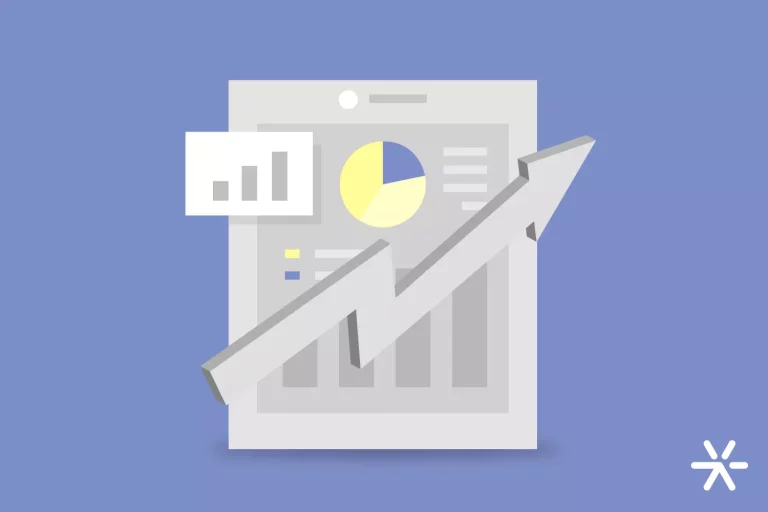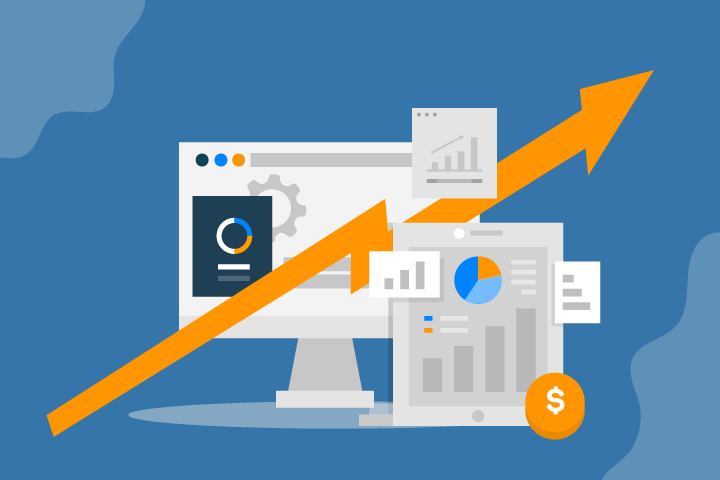Tips to Avoid Mistakes in Your 2025 Sales Forecast
For the sales sector, there is a factor that helps make the work more organized, secure, and with well-defined goals: the predictability of sales results.
Have you ever made a sales forecast mistake and had to scramble to recover from it?
Or do you want to avoid such issues before they happen?
Then check out the tips we’ve gathered to get your 2025 forecast right and plan your business year.
What is Sales Forecasting?

Sales forecasting is an estimate of a company’s future provisions and deals.
This calculation is made by considering sales history, as well as market trends, business model, number of customers, and average ticket size.
Why is it Important to Make a Sales Forecast?
Sales forecasting is important because it provides an estimate of the company’s revenue, as well as providing guidance and realistic goals for the sales team.
With the projection in hand, the team works more motivated, and monitoring whether the goal is being met or not can be done periodically.
Even with the importance of sales forecasting, one in four companies is dissatisfied with the quality of this calculation. (Source: CSO Insights).
With the correct forecast, the company can also predict stock levels, merchandise purchases, hiring, and necessary investments, increase the team, and meet customer demand.
What are the Factors that Influence Sales Forecasting?

In addition to internal factors and the company’s sales history, we must also consider external factors that can influence the sales forecast calculation.
Economy
Sales history doesn’t always determine the forecast for the next year.
To have a more realistic estimate, it’s also necessary to monitor the evolution of the economy, as it has a direct impact on financial movement.
Industry Sector
The growth or decline of the business’s industry sector also affects the sales forecast, especially when we talk about sectors that depend on seasonality.
If this is the case for your company, it’s important to also consider these high and low phases in your forecast.
Competition
Another factor not under the company’s control, but that must be considered in the sales forecast, is the competition.
The emergence of new companies can affect sales, as well as the closure of a major competitor’s operations or a shift in their strategy.

How to Make a Realistic and Accurate Sales Forecast
To make a calculation that provides security for the sales team and the financial health of your company, it’s necessary to take into account all the internal and external factors we’ve mentioned.
Additionally, take advantage of these tips:
- Understand your product or service’s sales cycle. Typically, B2B companies have a longer negotiation and contract closing time, and this needs to be factored in when calculating.
- Analyze how your sales funnel is currently performing. It could be that business opportunities are near, or that the estimate could improve if you take actions to warm up leads already in your base. This could be a differentiator: only 30% of companies have a dedicated team for lead conversion and qualification. (Source: Ascend2)
- The average ticket size is one of the main factors in this calculation. If your company plans to launch new products and services or increase the value of existing products and services, these changes need to be factored into the sales forecast.
Most Common Mistakes when Making a Sales Forecast

The main mistake that leads to an inaccurate sales forecast is considering only one factor.
For example, you can use last year’s history as a base, but it cannot be your only source of analysis.
On the other hand, companies without historical data also fall behind.
Without this data, the sales forecast can hardly be made.
Another big mistake is assumptions.
Creating projections without data is the same as not making projections at all, as they will have no validity.
If you’re making projections for a new company with no history, or a company that doesn’t track data, the market, competition, and economic research work will be doubled.
What are the Methods for Sales Forecasting?
There is no ready-made formula for calculating sales forecasts, as each company needs to consider all factors that are unique to it.
However, there are some methods that can be used and adapted.
- Bottom-up method: This method evaluates the smallest details and the forecast starts from them. In this type of forecast, the customer acquisition cost, cost per lead, or average ticket, for example, are calculated individually, and the projection is made from these numbers.
- Top-down method: This method evaluates the whole, the general picture, and then makes estimates. You can use these methods separately or together, where one validates the projections initially determined by the other.
How is the Sales Forecast Calculation Done?

As we mentioned, there are a few ways to make the calculation.
These can be combined or adapted according to internal and external factors.
Some calculations are:
Forecast by Principal Value
Based on the number of leads generated, the investment to capture these contacts, and the conversion rates, you can forecast sales.
The calculation would be:
Average Lead Value = Average Sales Price × Lead-to-Customer Conversion Rate
Forecast by Opportunities
Using the number of opportunities generated and the conversion rates of these contacts into customers, sales forecasts can also be made:
Expected Opportunity Value = Average Sales Price × Average Closing Rate
Multivariable Analysis
This type of calculation is recommended because it is more complete, modern, and considers various factors. Multivariable analysis uses predictive data analysis.
For this format, you can look for specialized software or hire a specialist.
Check out: 8 Sales and Marketing KPIs Leaders Want to See in Your Dashboard
Software to Help with Sales Forecasting
If investing in this type of solution seems best for you, here are some available options in the market:
- SAP Integrated Business Planning
- Blue Yonder Demand Planning
- Oracle Demantra
- Logility Solutions
- Anaplan








